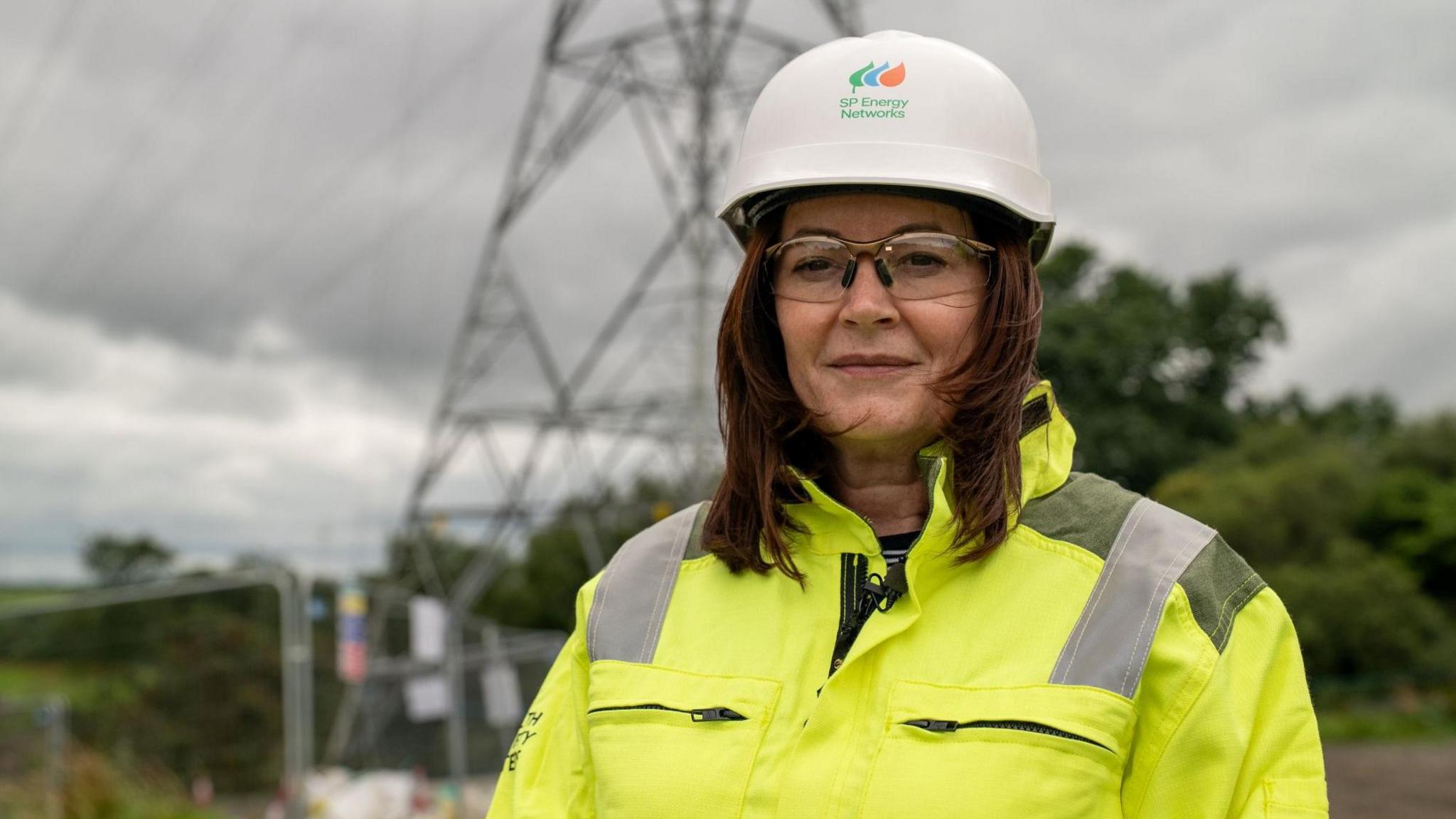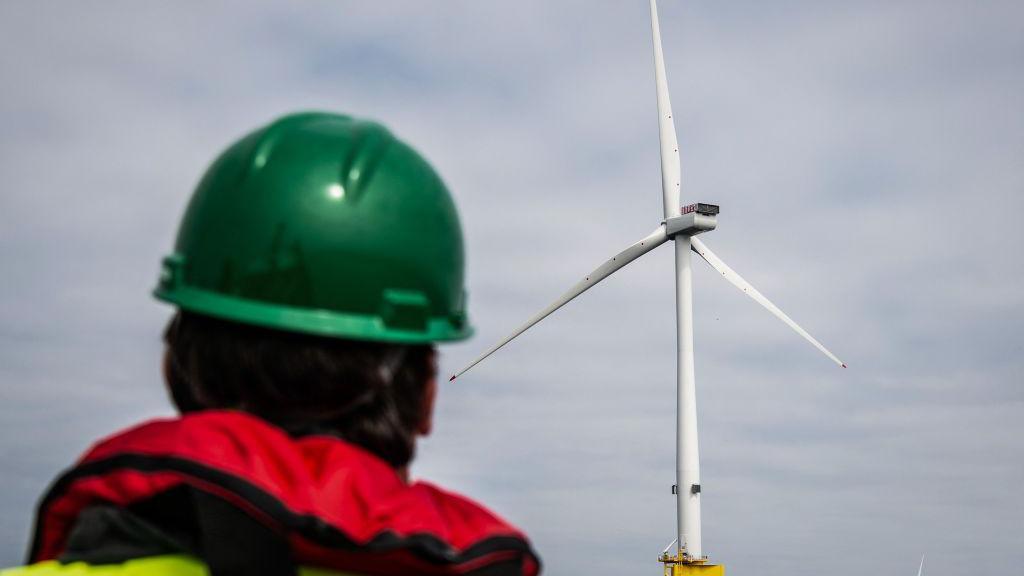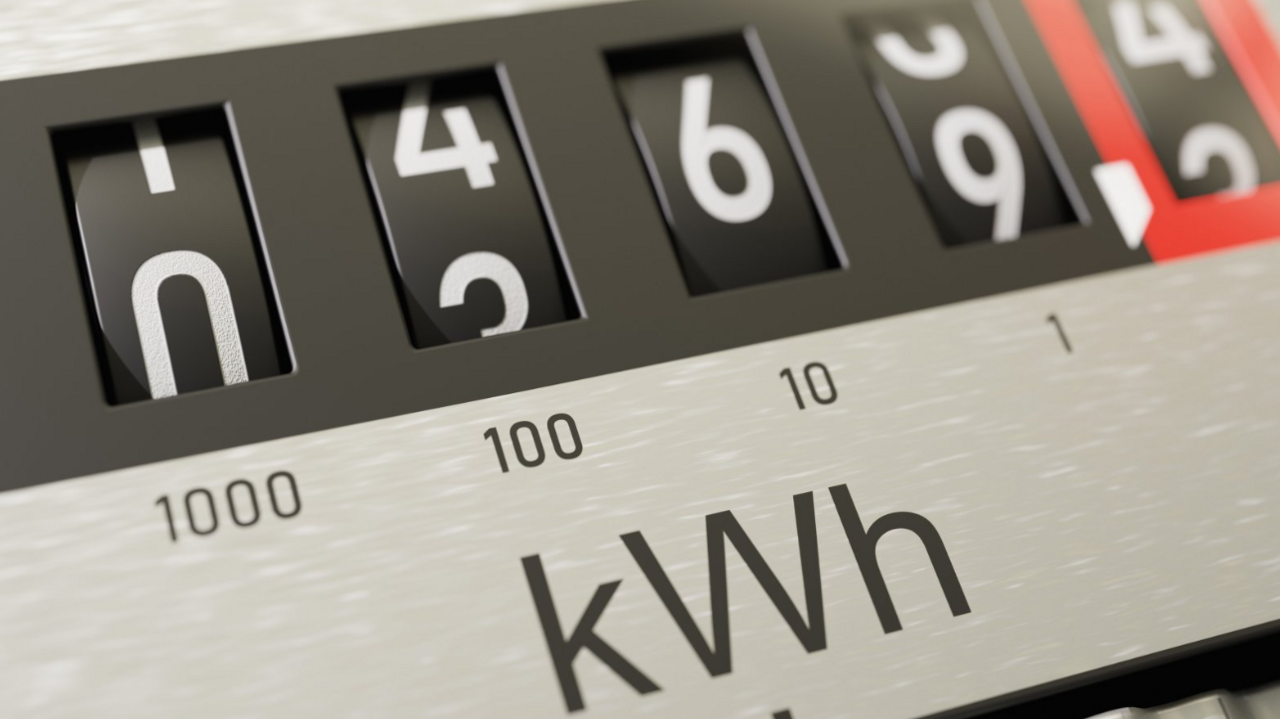More pylons 'crucial' despite cost to bill payers
Taking to the skies to inspect Scotland's power lines
- Published
A £34bn investment in Scotland's electricity network is crucial for clean energy targets despite the increased cost on bills, a transmission operator says.
The energy regulator Ofgem is consulting on plans to reinforce and expand the network of high-voltage pylons and cables.
Scottish Power Energy Networks (SPEN) says the plan will add an extra £12 per year to the average bill but will pay back in the longer term.
An extra 310 miles (500km) of lines is needed over the next five years in central and southern Scotland to support an expansion in artificial intelligence (AI) and demand for heat pumps and electric vehicles.
A predicted growth in renewable generation in Scotland will far exceed the amount that can be consumed and so much of it will have to be exported, mainly to large population centres in England.
Almost 30 gigawatts (GW) of new offshore wind is expected to be built in the seas around Scotland which is ten times more than the 3 GW currently demanded at peak times.

Nicola Connelly says we need a "safe and resilient" network
While demand is expected to double by 2050, that still leaves huge amounts of excess electricity which will need to be transported.
Cables which export that electricity south of the border will need to increase from a current capacity of 6.6 GW to 40 GW by 2040.
The transmission network in England and Wales is owned and operated by National Grid but in Scotland is split between two operators.
Scottish Power runs it in central and southern Scotland while SSE provides the northern network.
Spending on grid infrastructure is added onto bills but is regulated by Ofgem and operators have to make a case for what is necessary every five years.
A consultation on spending plans up to 2031 runs until 26 August.

An increase in demand from additional homes is part of the reason for investing
SPEN chief executive Nicola Connelly says the way we use electricity has changed enormously since the current network was built, with more change on the way.
She says the £12bn investment they are planning will see the company’s workforce almost double, with the supply chain also benefitting.
"Ultimately we've got a responsibility to make sure that we can get the electricity to where it's needed, that we've got that safe and resilient network and we do it at a cost that's reasonable for customers," she added.
The electricity sector is often criticised for the amount of "constraint payments" that are received for not generating power.
The payments are a compensation for the grid not being capable of shifting the electricity to where it is needed.
It is hoped the investment will save billions by increasing the size of the grid and reducing those constraint payments.
Related topics
- Published7 April

- Published13 August 2024

